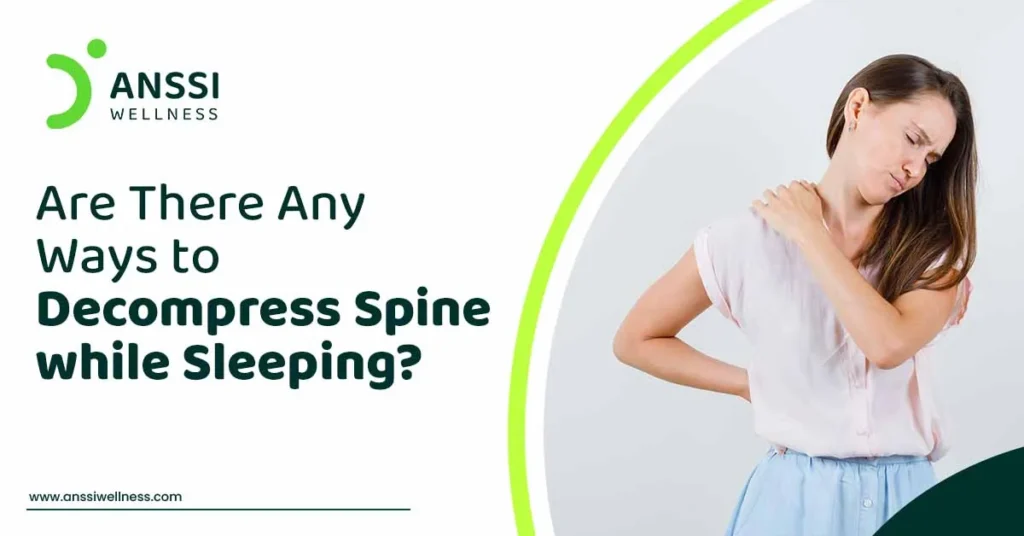The quick answer to this question is ‘Yes.’ Mostly when we are conscious, we keep our spinal posture vertically. Hence, our spine is put under pressure as a result of this constant struggle against gravity, which may result in the compression of our spine. Our spinal cord and the muscles that are connected to it may become overworked by this pressure.
When you sleep on your back, according to the American Chiropractic Association, you put about 22 kilograms of pressure on your spine. Even sitting at a desk for a long time or twisting while picking up a heavy object could cause harm, along with other reasons such as your mattress and sleeping position.
A specific method known as non-surgical spinal decompression technology is used to move the spine to alleviate pressure on the spine which involves repeated stretching to ensure decompression.
By doing this, you can easily get rid of pressure from the spinal discs, which are the gel-like intersections between the vertebrae. Any intervertebral disc that may have protruded will regain its position following this non-invasive decompression, freeing any nerves that may have been compressed. To enhance rapid healing, the spinal decompression technology further contributes to an increase in the flow of oxygen, water, and nutrient-rich fluid.
Different Ways of Decompressing Spine While Sleeping
To experience significant relief, spinal decompression treatment is accompanied by certain precautionary measures at home, especially while you sleep. The following are some techniques that can help you relax your spine while you sleep.
- Flexed Hip Position: To perform this exercise, you must first lie on your bed with your hips bent at a 30-degree angle. You will then need to bend your knees at a 30-degree angle once more. When you flex your neck to elongate your spine, this will enable your body to maintain its balance. You can also sleep with a pillow between your knees to keep your hips parallel.
- Face-up Posture: You must lie completely straight on your bed. The ceiling should be the focus of your attention. Now, place a 30°-angled pillow directly below your knees. In addition to making your spine longer, this will help it relax. You could also keep a pillow under your neck to keep it in a neutral position and support it.
- Sleeping in an Inclined Back Position: You can attempt to sleep in an inclined position by using a pillow with an indentation or a movable base between your legs and torso.
- Stomach Sleeping With Hip Support: Doctors around the world strongly advise against sleeping on your stomach because it makes your back hurt more. However, putting a pillow under one’s stomach can be a good place to start for some people who sleep on their stomachs all the time. The additional support alleviates pressure on your lumbar spine and prevents an unnatural curvature of your back. To prevent further pain, avoid placing any pillow underneath your neck.
- Choosing the Right Pillows and Mattress: It is a crucial aspect of decompressing your spine. The length of the spine is greatly influenced by the quality of the pillow. Memory foam is one of the best materials, and it has worked well for a long time. Memory foam pillows are extremely comfortable because they naturally conform to the shape of your spine.
Always go with the mattress that gives you the most support for your back when choosing a mattress. If the mattress you bought is still unsteady in some way, you can make it firmer by putting a piece of plywood that is one inch wide between the mattress and the spring. You can lengthen your spine naturally by sleeping on a firm mattress every night.
Be Cautious!
Make sure to take the following precautions.
- Never sleep on a water bed because it is so soft that it makes it easier for your spine to curve in any direction than a firm mattress would.
- Sleeping on your stomach with no support is not recommended. Your spine will compress as a result, causing severe back pain. Because of some compressed nerves, it may also result in numbness in the limbs.
FAQs
Yes, in many cases, the bulging disc symptoms go away after a period of time.
MRI is the best diagnostic test to detect herniated and bulging discs.
Massage can provide short-term relief from chronic back pain caused by a bulging disc.



